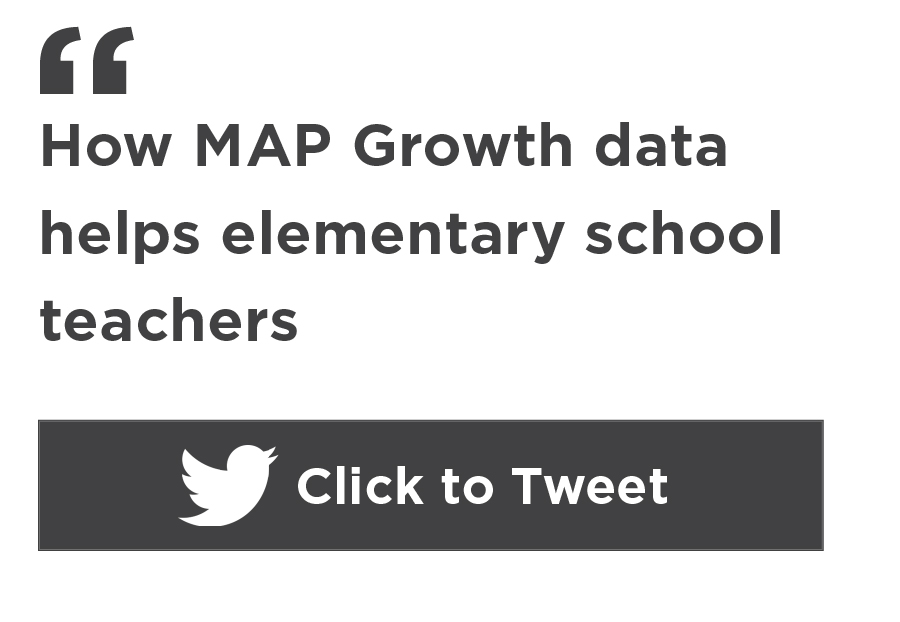Ask Susan Hankins about the most important factor in her school’s success, and she won’t hesitate to tell you: it’s the teachers.
In her tenure as principal of Memphis Elementary School, located in the small Michigan town of the same name, Susan has seen her teachers step up in myriad ways to help students thrive, from staffing a robust instructional improvement team to making an overnight pivot to remote learning with the onset of the pandemic last March. Susan praises her teachers as talented, dedicated, and driven.
Susan’s teachers give a lot and, in return, she makes sure they have high-quality, frequently refreshed data on students’ knowledge and learning progress. Giving teachers great data, Susan has found, is one of the best ways to respect and make the most of their valuable time. Partnering with NWEA has allowed Memphis Elementary School to build a data-centric culture in which teachers feel supported with the information they need to deliver the right instruction to the right students—at the right time.
“We were looking for a solution”
“Everyone says not to take your job personally, but teaching is personal,” says Susan. “Previously, when we had our teachers administer tests such as reading assessments to students, we got the kind of inconsistent results you’d expect from a subjective scoring process. What we really needed was the most accurate information possible that would help us plan for instruction. We were looking for a solution, and my peers in other districts all spoke highly of NWEA.”
As Memphis Elementary began using NWEA’s adaptive, computer-based assessments, such as MAP® Growth™, the school gained the precise data teachers needed to do their best classroom work. With this data, the school’s What I Need (WIN) program—in which students are given dedicated time every day to work on their learning challenges—became a more effective vehicle for delivering targeted interventions.
Before Susan came on as principal, learning interventions at Memphis Elementary were conducted mainly by paraprofessionals. Today, guided by the belief that students with the highest need should have the benefit of working with the school’s most highly trained teachers, Memphis Elementary designates a few teachers at each grade level to deliver interventions, while the parapros provide classroom coverage. It’s a shift in focus that puts teachers at the center of the highest-impact instructional time. And because teachers can now feel confident they have accurate, up-to-the-minute assessment data, they and school leaders share the conviction that WIN time is time well spent.
“I’m really proud of what we’ve done with our WIN time,” says Susan, “and it’s not just about the kids who need more support. With our data from NWEA, we have a much better idea of who our advanced kids are, too—those who are in the top percentiles and ready for more challenging material.”
Keeping up with the competition
Don’t be fooled by their mild Midwestern manners. Susan says the teachers at Memphis Elementary School are fierce competitors, and they’re well aware of how their school is performing relative to others in the area. For these teachers, precise assessment data isn’t just a tool for improving instruction or boosting student outcomes; it’s also a competitive advantage.
“I always joke with my teachers that I want to be the number-one school in our county,” says Susan. The two nearby schools that tend to outperform Memphis Elementary are in bigger, more affluent communities, making a head-to-head comparison a bit unfair. But Susan points out that her school is never too far behind its “rivals” and, in fact, Memphis Elementary has managed to close the gap considerably in some areas.
“We’ve grown by leaps and bounds,” says Susan. “By setting goals for ourselves and keeping tabs on how we’re performing, we’ve been able to remain laser focused on student growth. That includes working really hard on our master schedule so that all of our teachers have common prep time every single day. They’re planning together, and they’re diving into the data together.”
Of course, the disruptions to classroom learning caused by the pandemic have put a big wrinkle in workflow and collaboration at Memphis Elementary. Susan is thankful for NWEA research on trends in learning during COVID-19, and she knows that even in the best of times, ensuring that students get the instruction and support they need is a task that requires constant vigilance.
“It’s always a work in progress,” says Susan. “I can’t say that we’ve completed it yet, and I don’t know that we ever will.”
To learn more about how Susan Hankins built a data-centric culture at Memphis Elementary School, read our case study, “A Michigan elementary school taps the power of data to effect positive change.”









